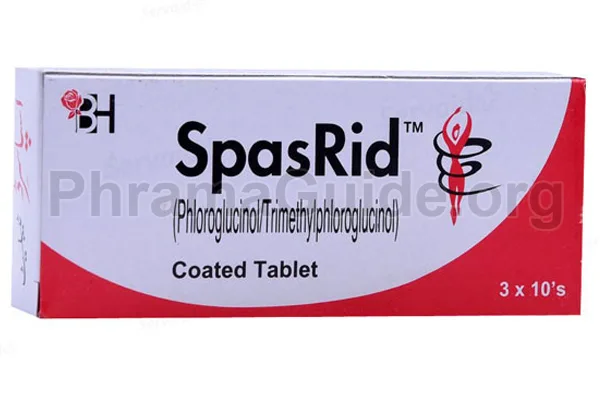Spasrid is used to relieve smooth muscle spasms in the gastrointestinal tract, urinary tract, and uterus. Like any medication, Spasrid can have both common and less common side effects.
Common Side Effects
- Gastrointestinal Disturbances: Spasrid can cause nausea, vomiting, and diarrhea.
- Allergic Reactions: Some individuals may experience an allergic reaction to Spasrid, which can manifest as skin rash, itching, or hives.
- Headache: Mild to moderate headaches are a common side effect With Spasrid.
- Dizziness: Some people may experience dizziness or lightheadedness when taking Spasrid.
- Flushing: Flushing or a sensation of warmth in the face may occur with Spasrid.
- Low Blood Pressure: In some cases, a drop in blood pressure can occur, leading to symptoms like fainting or feeling weak.
Less Common Side Effects
- Hypersensitivity Reactions: Some individuals may experience severe allergic reactions, such as difficulty breathing, swelling of the face, lips, tongue, or throat, and a rapid heartbeat. These reactions require immediate medical attention.
- Anaphylaxis: Although extremely rare, anaphylaxis, a severe and life-threatening allergic reaction, is a possibility of Spasrid.
- Liver or Kidney Problems: There have been some reports of liver or kidney problems associated with the use of Spasrid, but these are quite uncommon.
- Hematological Effects: Spasrid can affect blood cell counts, such as a decrease in white blood cells (leukopenia) or platelets (thrombocytopenia), may occur.
- Severe Gastrointestinal Effects: While gastrointestinal disturbances are common, severe conditions like gastrointestinal bleeding or ulcers are very rare but possible with Spasrid.
- Neurological Effects: In sporadic cases, more severe neurological effects like seizures or loss of consciousness may occur with Spasrid.

What is Spasrid?
Spasrid is one of the leading brands of Phloroglucinol and Trimethylphloroglucinol, manufactured and marketed by Barrett Hodgson (Pvt) Ltd, Pakistan.
Spasrid : Available Formulations and Strengths
Presently, Spsarid is available in Tablet, and Injection Forms
Spasrid Tablet : Phloroglucinol 40mg, and Trimethylphloroglucinol 0.04mg strengths
What Are The Possible Drug Interactions of Spasrid Tablet?
- Alcohol: Combining Spasrid with alcohol may increase the risk of side effects like dizziness, drowsiness, and impaired coordination. It is advisable to avoid alcohol while taking Spasrid.
- Other Muscle Relaxants or Sedatives: Combining Spasrid with other muscle relaxants or sedative medications, including benzodiazepines and opioids, can potentiate the sedative effects and increase the risk of excessive drowsiness, dizziness, and impaired cognitive function. This can be dangerous and is typically best avoided.
- Antihypertensive Medications: Spasrid may lower blood pressure, and when taken with other antihypertensive drugs, there is a potential for additive effects, causing a more significant decrease in blood pressure. Close monitoring by a healthcare professional is essential to avoid excessively low blood pressure.
- Monoamine Oxidase Inhibitors (MAOIs): Combining Spasrid with MAOIs, a class of antidepressant medications, can lead to a dangerous increase in blood pressure. This combination should be avoided.
- Serotonergic Medications: There is a theoretical risk of serotonin syndrome when Spasrid is used alongside other serotonergic drugs, such as selective serotonin reuptake inhibitors (SSRIs), serotonin-norepinephrine reuptake inhibitors (SNRIs), and some migraine medications. While rare, serotonin syndrome can be a serious condition and requires close monitoring.
- Anticoagulants: There have been some reports of potential interactions between Spasrid and anticoagulant medications like warfarin. These interactions can affect blood clotting, and monitoring of blood coagulation levels may be necessary when used together.
- Antidiabetic Medications: There have been rare reports of interactions between Spasrid and antidiabetic drugs, potentially affecting blood sugar control. Close monitoring of blood glucose levels is advised when using these medications concurrently.

Leave A Comment